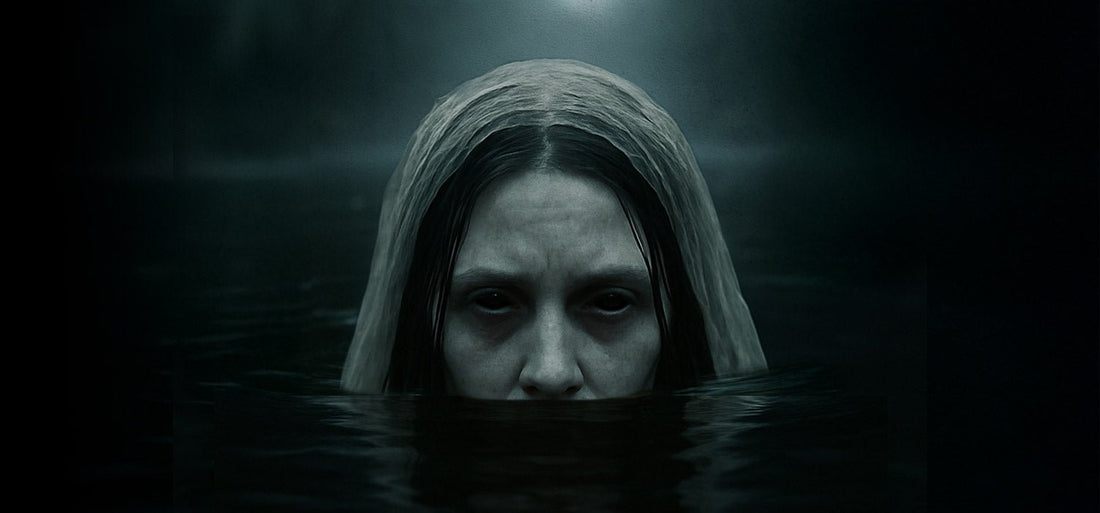
La Llorona Story: The Legend of the Weeping Woman
Share
If you’ve ever walked near a river at night and thought you heard a woman crying, you’re not alone. For generations, that eerie sound has been whispered about in Mexican folklore as the warning call of La Llorona—The Weeping Woman. She is a ghost. A mother. A warning. And her story has haunted families, inspired artists, and terrified children across centuries.
This is the legend of La Llorona.
The Weeping Woman: Who is La Llorona?
“La Llorona” literally means “The Weeping Woman” in Spanish, and her legend is among the most enduring tales in Latin American culture. She is usually described as the ghost of a woman who has lost her children—often by her own hand—and now roams the earth, crying out in eternal grief: “¡Ay, mis hijos!” (“Oh, my children!”)
The setting is almost always the same: near rivers, lakes, or bodies of water. Those who hear her cries are said to be marked by misfortune—or worse. Her spirit wanders at night, searching, mourning, and sometimes stealing children who stray too far from home.
Core Versions of the Story
The tale of La Llorona is not a single story, but a tapestry woven from centuries of oral tradition. While the core elements remain consistent—grief, water, loss—there are several widely told variations:
The Betrayed Wife
In this version, La Llorona was once a beautiful woman who married a wealthy man. They had children, but over time, he grew distant. When she discovered he was leaving her for another woman, she drowned their children in a fit of rage. Overcome with guilt, she took her own life. Denied entrance to heaven, she was cursed to walk the earth forever, crying for her lost children.
The Abandoned Mother
Another version portrays her as a poor woman seduced and abandoned by a nobleman. When he left, she was left to care for their children alone. Facing starvation and desperation, she drowned them—some say to spare them suffering. Her remorse sealed her fate as a wandering spirit.
The Condemned Spirit
In all versions, La Llorona is caught in an eternal state of mourning and punishment. Her cries are not only for her lost children—but for herself. Her story serves as a chilling reminder that some mistakes echo far beyond death.
Her Appearance and Haunting Signs
La Llorona is almost always described the same way: a tall, thin woman in a long white dress. Her hair is tangled and wet, her face often hidden or obscured. Some say she glides over water. Others claim her feet never touch the ground.
The true horror, though, is in her voice. A mournful wail that pierces the night air and unsettles the soul. It’s said that if you hear her cry from nearby, she’s far away. But if it sounds distant—she’s already behind you.
A Warning to Children and Adults Alike
For generations, parents have told the story of La Llorona as a way to teach their children obedience and caution. “Don’t stay out after dark. Don’t go near the water alone. Or La Llorona will take you.”
The ghost becomes more than just a story—she’s a disciplinary tool, a symbol of danger, and a reminder that the world is not always safe. But she also haunts adults, serving as a cautionary tale about the consequences of unchecked emotion, betrayal, and grief.
Cultural Power and Evolution of the Legend
La Llorona is deeply embedded in Mexican and Mexican-American culture. She is a fixture in Día de los Muertos altars, bedtime stories, and neighborhood warnings. Her story shifts slightly from region to region—sometimes she’s a noblewoman, other times a peasant—but her core remains the same: a woman caught between love and horror, human and ghost.
The legend has crossed borders and generations because it taps into something primal—fear, guilt, and the fragile line between protection and punishment.
Modern Presence in Pop Culture
La Llorona isn’t just whispered about anymore. She’s on screens, in songs, in books. Her image has evolved from folklore into iconography:
- She’s appeared in The Curse of La Llorona (2019), part of The Conjuring universe.
- She shows up in regional music, often portrayed as a metaphor for heartbreak or longing.
- Graphic novels and short horror films frequently reinterpret her tale for modern audiences.
What’s remained consistent is the feeling she leaves behind—unease, awe, and sadness.
Curious about her film legacy? Explore The Weeping Woman on the Big Screen
Explore the Legend Beyond the Story
La Llorona is not just a story. She’s an evolving symbol. A living myth. And in our upcoming blogs, we’ll explore her further:
- La Llorona Movie – How she haunts the screen and what films get right (or wrong).
- La Llorona: Is It Real? – Examining the sightings, rumors, and psychological roots of the legend.
- La Llorona Images – Visual depictions across art, pop culture, and historical interpretations.
She continues to cry—but she also continues to change.
Final Thoughts: The Ghost Who Still Cries
La Llorona is more than a ghost. She’s a story passed from one generation to the next. A shadow that grows deeper the more we look. A spirit that reminds us of what happens when love turns to loss, and grief never ends.
Whether you believe in her or not, if you hear her crying… don’t follow the sound.
